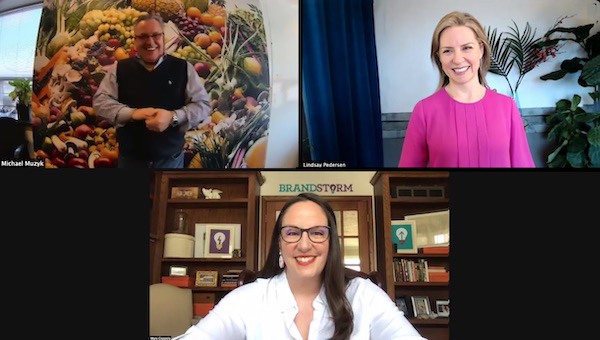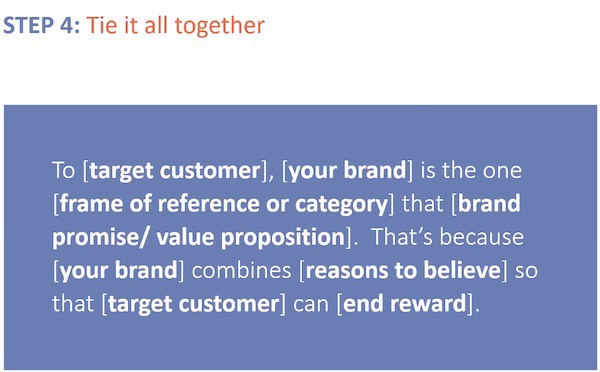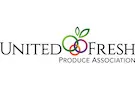United Fresh BrandStormTM is taking place virtually this week. The event kicked off on Monday, March 8th, with a networking reception and the educational sessions began the next day, March 9th. The opening session featured keynote speaker Lindsay Pedersen, best-selling author and brand strategist, who spoke on how to create a strong brand.
Before Pedersen started her presentation, Mary Coppola, Tony Freytag and Michael Muzyk briefly talked about what this past year has meant for marketing. “In this past year, marketing became a critical business function for many companies who were called upon to check their brand identity, communicate their pivots and use their technological acumen to reach consumers in new ways,” Coppola shares.
Freytag adds: “This past year, we’ve all had to become better in both the marketing and the empathy world. We all became experts in social marketing and e-commerce, and this strengthened our companies.” Muzyk agrees: “Marketing didn’t used to come to mind as a pillar of a company, but after the events of last year we have all realized that marketing is not only a pillar but a weight-bearing wall. We can’t survive without it, and 2020 has proven that.”

Michael Muzyk, Lindsay Pedersen and Mary Coppola.
The importance of a strong brand
Pederson started off her presentation by explaining the meaning behind brand and brand strategy, as well as why it is important to develop a strong brand for your company. “Your brand is the meaning that you stand for in the mind of your audience; it is a promise that you make to the customer. Your brand strategy is the deliberate articulation of that promise, it is an exercise of intentionality. After identifying the promise, you want to deliver on it and make sure that every decision you make will help make that promise to come true,” she explains.
There are six main reasons why companies should care about building a strong brand, Pederson shares. “The first is because a strong brand elevates pricing power and builds healthy margins. Secondly, it commands attention – in today’s society where there are so many things competing for people’s attention, a strong brand helps you break through the clutter and reach and engage with your audience. A strong brand also fosters loyalty in your customers as well as galvanizing your employees with a sense of purpose. Your brand will help guide the decisions throughout your company. Finally, a strong brand differentiates your company in the long-term. Everything else you have will eventually go away or be replaced by something else, but a strong brand has the ability to last across generations,” says Pederson.
Building your brand strategy
So how do companies build a brand strategy? Pederson outlines four steps to follow, though she emphasizes that the most important step is to just start – “Don’t wait for a muse to tell you what your perfect brand will be, take control of the situation and just start working on developing it,” she says.
The first step is for a company to identify their uncommon denominator. “To do this, the team will have to examine three key questions,” says Pederson, explaining: “What does our customer want? What are our competitors’ strengths? And what are our business’ strengths? After cataloguing the answers, find the thing that you are good at that your competitor isn’t and use that to meet the customers’ needs.”
Next is the benefit ladder. “You start at the bottom of the ladder by highlighting the functional benefits of your product, which will be backed up by evidence. Once your audience is convinced of these benefits, you build on that to introduce more emotionally based benefits,” says Pederson.
The third step is about characterizing your brand. “Research has found that there are 12 characterization archetypes that continually recur throughout history, and these archetypes can be aligned with brands. It is easier for people to bond with brands that feel like a person or a character, so find which archetype works best for you and then use personal and tonal adjectives to help you express this archetype,” says Pederson, concluding: “The final step is to tie all this together into a positioning statement using the format in the template. This statement is what should guide all the decisions made within the company – work to make that statement true with every action you take.”

The positioning statement template.
United Fresh BrandStorm will run through Thursday, March 11th. To register to attend the event, click here.
 For more information:
For more information:
Mary Coppola
United Fresh Produce Association
Tel: +1 (202) 303-3425
Email: mcoppola@unitedfresh.org
www.unitedfresh.org
